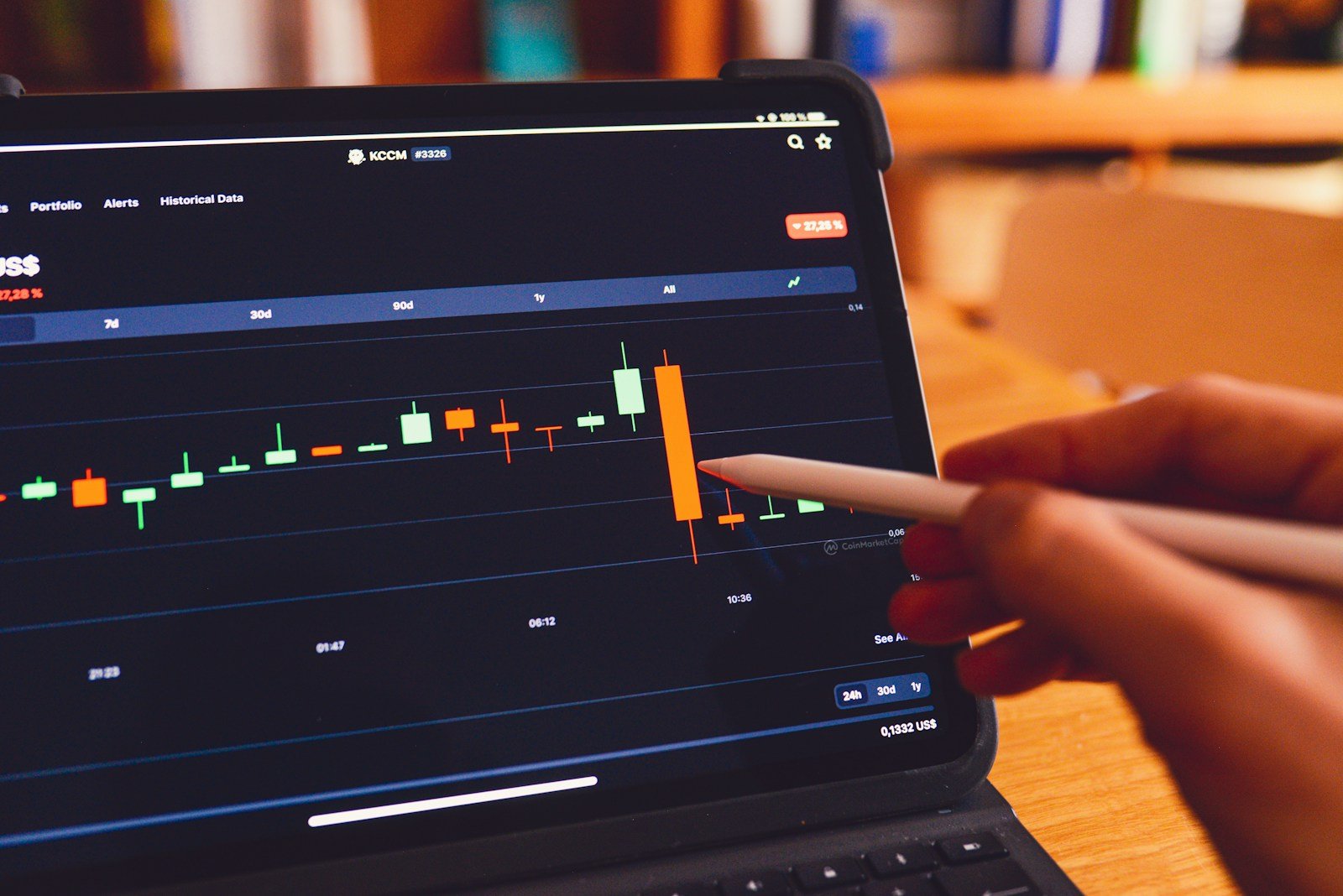Blog
The Spinning Top Candlestick Pattern
Exploring the Spinning Top Candlestick Pattern

Understanding candlestick patterns is crucial for traders who want to make informed decisions in the financial markets. One such pattern that often captures the attention of analysts is the Spinning Top Candlestick Pattern. This pattern, known for its unique appearance, can provide valuable insights into market trends and potential reversals. In this article, we delve into the nuances of the Spinning Top Candlestick Pattern, exploring its key characteristics, how to identify it, its significance in market trend analysis, and strategies for trading effectively with this pattern.
Introduction to Spinning Top Candlestick Pattern
The Spinning Top Candlestick Pattern is a popular technical analysis tool that traders use to gauge market uncertainty. Its distinct appearance, characterized by a small body and long wicks, signals indecision in the market. This pattern can appear in both uptrends and downtrends, indicating a potential pause or reversal in the current price movement. Understanding the implications of the Spinning Top is essential for traders looking to anticipate changes in market sentiment.
Historically, candlestick patterns have been an integral part of Japanese trading practices. The Spinning Top, in particular, has gained prominence due to its ability to signify a balance between buyers and sellers. This balance often leads to a stalemate, where neither side has the upper hand, prompting traders to remain cautious. The pattern’s neutral stance makes it a versatile tool in both bullish and bearish markets, offering insights into potential future price actions.
Traders and analysts emphasize the importance of context when interpreting the Spinning Top Candlestick Pattern. While the pattern itself indicates indecision, its true significance emerges when considered alongside other technical indicators and market conditions. For instance, a Spinning Top appearing during a strong uptrend might suggest a potential reversal, whereas in a downtrend, it could indicate a temporary consolidation. Thus, the pattern serves as a critical component of a comprehensive market analysis strategy.
Key Characteristics of Spinning Tops
The Spinning Top Candlestick Pattern is defined by its small real body, which reflects minimal price movement between its opening and closing values. This small body signifies that neither bulls nor bears have dominated the session, resulting in a narrow range of price action. The long upper and lower shadows, however, indicate that significant price movements occurred within the session, but ultimately, the market settled near its opening price.
One of the distinguishing features of the Spinning Top is its ability to present a balanced view of market sentiment. The long shadows suggest that both buyers and sellers have attempted to gain control during the trading period, but neither succeeded in establishing a definitive trend. This balance often leads to a state of uncertainty, prompting traders to be wary of significant price movements in the upcoming sessions.
While the Spinning Top may seem straightforward, its implications can be profound when analyzed in conjunction with other patterns and indicators. For example, when observed alongside support and resistance levels, it may provide a clearer picture of potential reversals or continuations. Additionally, the volume accompanying the pattern can offer insights into the strength of the indecision, helping traders make more informed predictions about future market movements.
How to Identify a Spinning Top Candle
Identifying a Spinning Top Candlestick Pattern involves looking for specific visual cues on a price chart. The pattern is recognized by its small real body, typically centered between two long shadows or wicks. The length of the shadows should be significantly greater than that of the body, emphasizing the sharp fluctuations in price during the trading session.
To accurately identify a Spinning Top, traders often compare the candlestick with preceding and succeeding candles. A Spinning Top that appears after a series of strong bullish candles might indicate a potential reversal, while one that follows bearish candles could suggest consolidation. This comparative approach helps traders contextualize the pattern within the broader market dynamics, allowing for better decision-making.
The timeframe of the chart also plays a crucial role in identifying Spinning Tops. While these patterns can appear in any timeframe, their significance might vary depending on the period under consideration. Short-term charts may offer insights into immediate market reactions, whereas longer-term charts can highlight more substantial trend shifts. Traders should therefore select the appropriate timeframe that aligns with their trading strategy and objectives.
Significance in Market Trend Analysis
The Spinning Top Candlestick Pattern plays a vital role in market trend analysis due to its ability to signal potential reversals or continuations. In an uptrend, the appearance of a Spinning Top might indicate waning bullish momentum, suggesting that bears could be gaining strength. Conversely, in a downtrend, it could imply that the selling pressure is diminishing, hinting at a possible bullish reversal.
Traders often use the Spinning Top in conjunction with other technical indicators, such as moving averages or the Relative Strength Index (RSI), to validate its implications. For instance, if a Spinning Top appears near a significant resistance level, accompanied by an overbought RSI, it could strengthen the case for a reversal. This confluence of signals enhances the reliability of the analysis and guides traders in making strategic decisions.
Moreover, the Spinning Top’s ability to highlight market indecision provides traders with valuable opportunities for reassessment. It encourages them to evaluate existing positions and consider potential adjustments. By acknowledging the uncertainty that the pattern represents, traders can adopt a cautious approach, preparing for various market scenarios and mitigating potential risks.
Strategies for Trading with Spinning Tops
Trading with the Spinning Top Candlestick Pattern requires a thoughtful approach that accounts for the context in which the pattern appears. One common strategy involves waiting for confirmation before executing trades. Traders often look for the next candlestick to validate the Spinning Top’s implications. A bullish candle following a Spinning Top in a downtrend might signal a reversal, prompting a long position.
Another effective strategy is to pair the Spinning Top with other technical indicators to strengthen trade decisions. For example, combining the pattern with Fibonacci retracement levels can help identify potential entry and exit points. This multi-indicator approach enables traders to increase their confidence in the signals provided by the Spinning Top, leading to more informed trading actions.
Risk management is also a crucial component of trading with Spinning Tops. Given the pattern’s inherent indecision, traders should employ stop-loss orders to protect against unexpected market movements. Additionally, position sizing should be carefully considered, ensuring that potential losses are manageable within the overall trading strategy. By incorporating these risk management techniques, traders can enhance their ability to navigate the uncertainties associated with the Spinning Top Candlestick Pattern.
The Spinning Top Candlestick Pattern serves as a powerful tool for traders seeking to understand market dynamics and potential turning points. Its ability to signify indecision provides a unique perspective on market sentiment, aiding traders in assessing the likelihood of reversals or continuations. By mastering the identification and interpretation of this pattern, traders can enhance their market analysis skills and develop more effective trading strategies.
Conclusion
Understanding the Spinning Top Candlestick Pattern is essential for traders aiming to navigate the complexities of financial markets. Its distinctive indicators of market indecision offer a valuable perspective on potential trend changes. By combining this pattern with other technical tools and implementing robust risk management strategies, traders can improve their decision-making process and maximize potential opportunities.

-

 Resources4 years ago
Resources4 years agoWhy Companies Must Adopt Digital Documents
-

 Resources3 years ago
Resources3 years agoA Guide to Pickleball: The Latest, Greatest Sport You Might Not Know, But Should!
-

 Resources3 months ago
Resources3 months agoTOP 154 Niche Sites to Submit a Guest Post for Free in 2025
-

 Resources3 months ago
Resources3 months ago50 Best AI Free Tools in 2025 (Tried & Tested)
